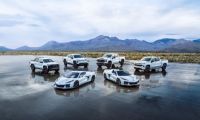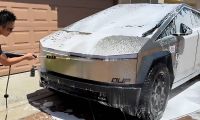One of Tesla's great assets is its excellent charging network: whether it's ports at destination or superchargers en route, Tesla has an impressive infrastructure that is the envy of the world. The company has recently made the decision to open up those precious points to other electric cars, a step that is gradually being implemented in all territories and that clearly is an advantage for users who do not own Teslas; however, there can also be potential issues as well.
The Netherlands has been the first territory outside the United States to open up the entire supercharger network to third parties. A limited number of locations in France and Norway have recently been added; it is no longer strange to find non-Tesla cars connected to one of the many existing charging points. There have been problems in this regard from the very beginning, especially due to the short connection hoses used by different brands, and the difficulty of some models to actually connect due again to the different positioning of their loading mouths.

That is why it is common to see how each car parks in a different way, depending on that positioning of the charger in the car. However, what it hasn't been seen or addressed so far is that these chargers can also bring security problems by not perfectly blocking the physical connection itself. That is, in order to prevent some “funny guy” from physically disconnecting electric cars while they are charging, all the connectors have a safety block that prevents the hose from being removed during recharging.
In that regard, the incompatibilities of the Tesla charging points with third-party vehicles can actually cause this kind of inconvenience, as it can be seen in Bjorn Nyland's video below, titled "Anyone can mess up Tesla supercharger session". He was one of the first to realize about the issue: the test he performed leaves no room for much doubt. While recharging a KIA EV6, the user gets out of the car, locks it in and walks away in order to leave the key far away, so that the automatic opening sensors are out of reach and do not automatically react. Under these conditions he approaches the charging socket, which is when the problem happens.

With the car locked up it should be impossible to disconnect the supercharger hose, but this is not the case. The safety lock does not act as it should, and just by pressing on the connector the recharging stops and the socket is easily disconnected. This poses a serious risk for third-party users who want to take advantage of the Tesla charging network, as they must be aware that this problem exists; therefore they will have to be vigilant at all times during charging so that some other funny user does not disconnect the vehicle.
Even though not much is expected to happen yet, Tesla can not actually do that much either at this point, as it has already done enough by opening the facilities to third party vehicles. It is not known yet if this situation will also happen with other EV models, so it will be the users themselves who should try the chargers out and make sure everything is OK, in order to increase safety.
All images courtesy of Tesla Inc.
Nico Caballero is the VP of Finance of Cogency Power, specializing in solar energy. He also holds a Diploma in Electric Cars from Delft University of Technology in the Netherlands, and enjoys doing research about Tesla and EV batteries. He can be reached at @NicoTorqueNews on Twitter. Nico covers Tesla and electric vehicle latest happenings at Torque News.












